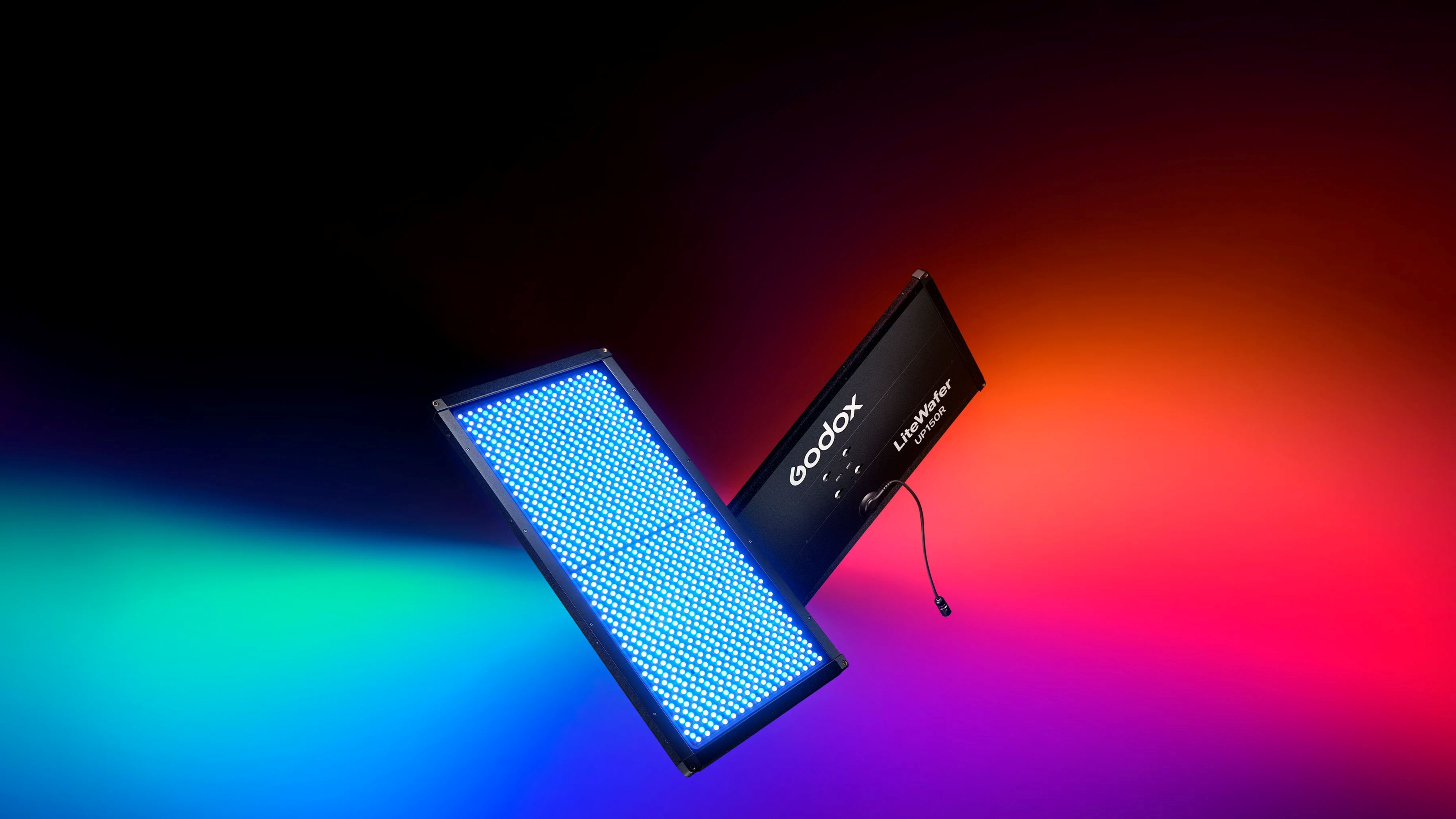Digital Camera World Verdict
Rotolight has packed the technology and features of its award-winning Titan X2 RGBWW LED light panel into the new Titan X1 which is a lot more portable and cheaper to buy. You can set any color you like, including white, dial in electronically-adjustable diffusion, use special effects for filmmaking and even use it as a high-speed flash. It’s a great tool for hybrid stills photographers and filmmakers.
Pros
- +
Very bright and accurate RGBWW LED light
- +
Adjustable diffusion built-in
- +
Easier to manage than larger X2
Cons
- -
Flash function has limited power
- -
Pricey when you add in extras
- -
Flash trigger costs extra
Why you can trust Digital Camera World
The Rotolight Titan X1 is pitched at a growing and broadening market. With more stills photographers enjoying the benefits of continuous light, especially those who are edging towards filmmaking, an LED light panel makes a lot of sense. And of course, for serious video users, it’s an essential buy.
See the Rotolight Titan X1 in action
The best LED panels use silent LEDs, in an RGBWW array which means they can be used to set all different color temperatures and tints of white light, plus can put out all the colors of the rainbow for creative effects, if you so wish.
Rotolight’s current Titan X2 2x1ft panel had all this and added some unique new technology, by not only being the brightest light in its class, but the only one to offer electronically-adjustable diffusion at the turn of a dial. This also affects the focus and light spread of the beam.
So no additional diffusion is required, and you adjust the quality of light using the rear controls or by remote control. The front panel changes from fully translucent to frosted, softening the light.
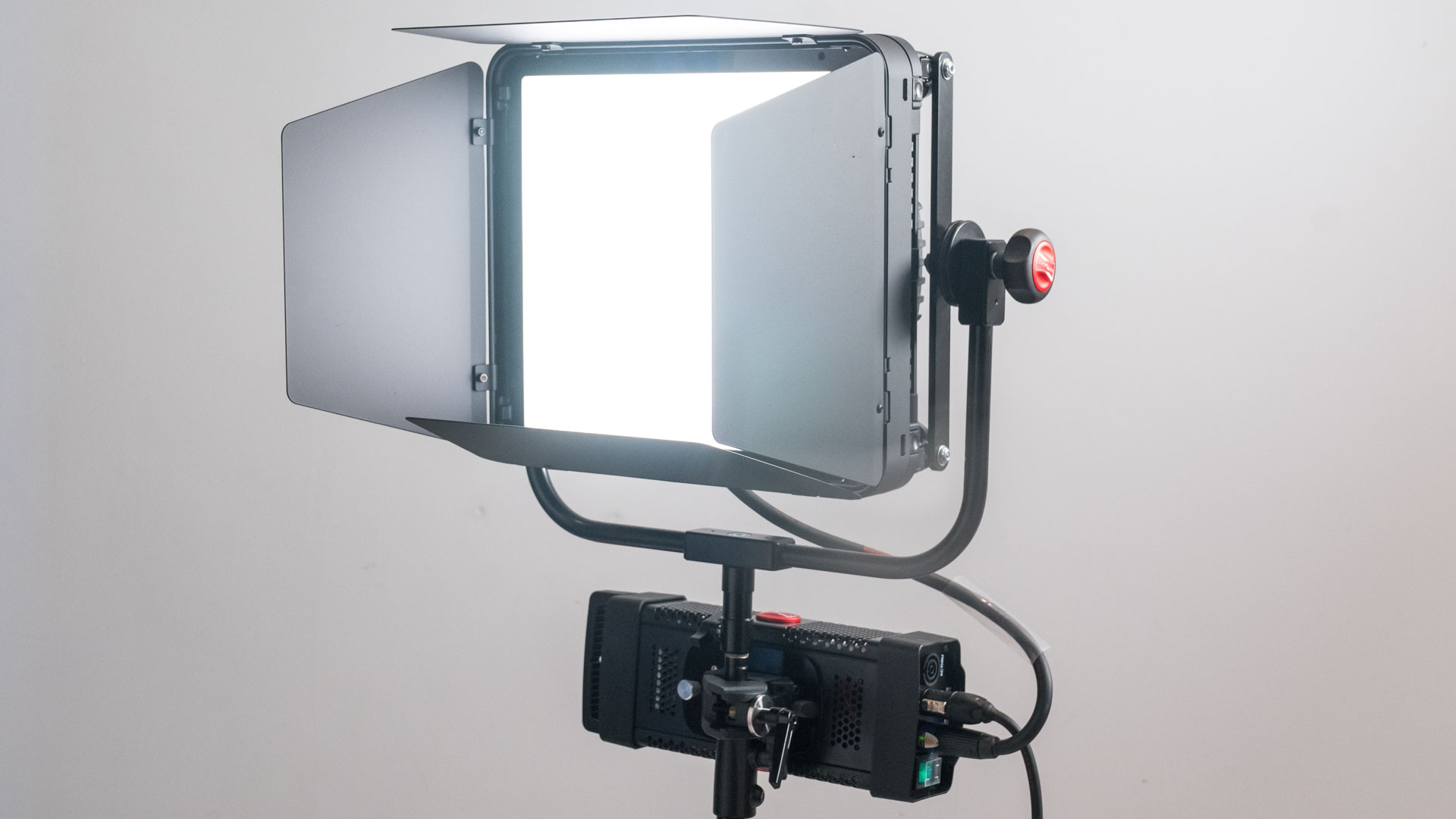
It also has an SFX mode to mimic a flickering fire, lightning, TV, gunshot, camera flashes and more. Plus high speed sync flash at up to 1/8000th, using an integrated Elinchrom EL-Skyport flash receiver.
However, at 2x1ft, the Titan X2 is no lightweight and can be tricky for a single-shooter to use on location. It also doesn’t fit on a normal photo-style light stand, as it requires a much larger cine-style stand. And coming with a custom fitted case, clamps to hold the transformer power unit and a barn door set, the Titan X2’s price proved a bit too much for many.
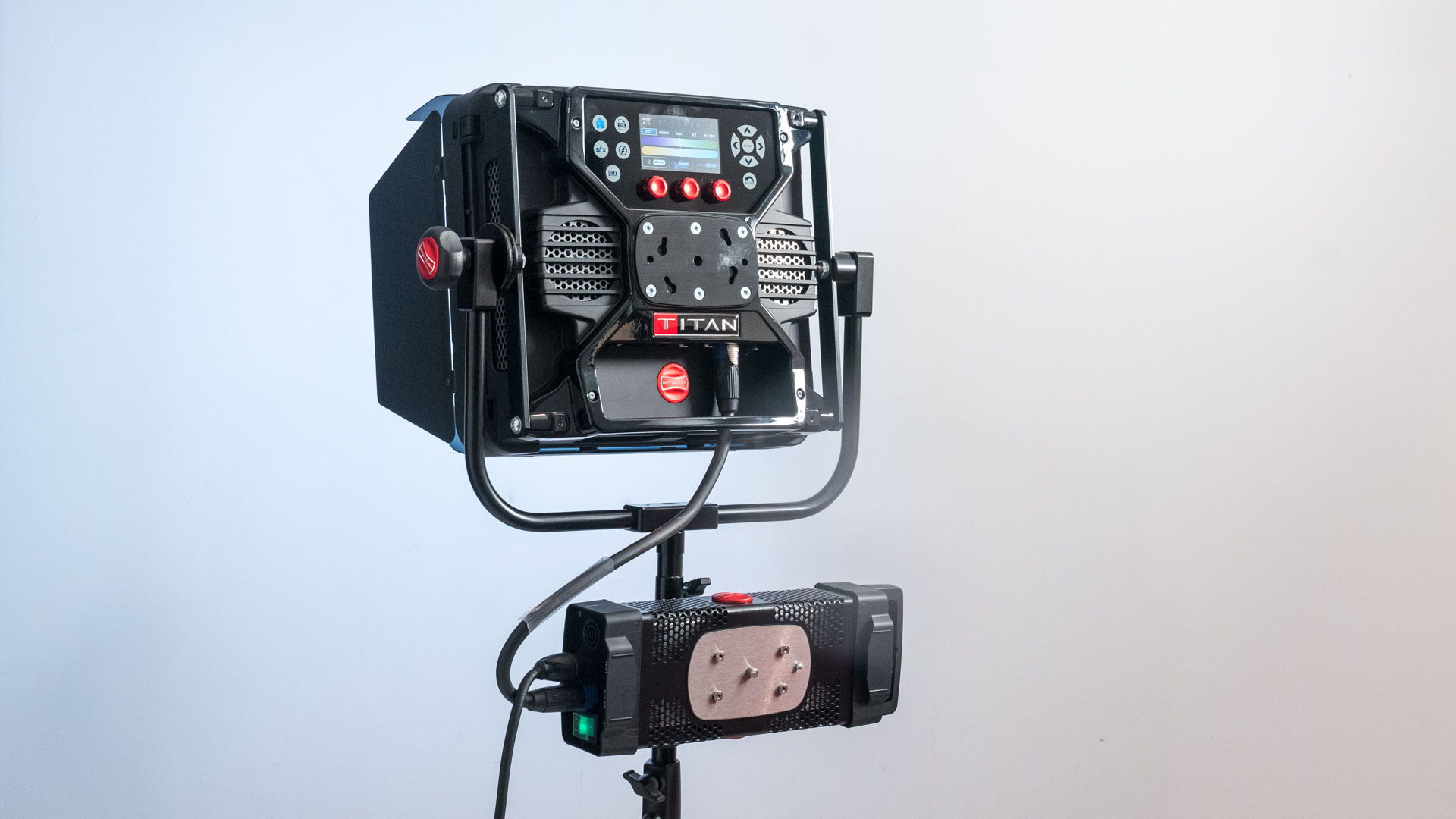
The new Titan X1 has exactly the same technology and features, but is half the size, a lot lighter, easier to hide on tight sets, fits on a normal light stand and, while it's still expensive by regular stills photography standards, it costs much less than its predecessor. And like its big brother, it is the most powerful in its own class, claims Rotolight.
The best camera deals, reviews, product advice, and unmissable photography news, direct to your inbox!
Specifications
Max light output: 8290 lux/ 770 foot-candles at 1m
White light: 3000-10,000K variable correlated color temperature
Colored light: RGBWW color gamut with hue, saturation and diffusion control
CRI: >97 @ 3200K, >95 @ 5600K
TLCI: 98
Beam angle: 60-150 degrees, electronically variable
Dimming: 0-100% continuous
Diffusion: 0-2 stops continuous
Power consumption: 230W nominal
Battery voltage: 20.5-26V DC
Control: Touchscreen interface, local five-pin DMX, RJ45, Bluetooth via Luminair app, LumenRadio, wired DMX, Elinchrom Skyport
Flash: Skyport HSS to 1/8000th sec, up to 200m range
LED lifetime: 50,000 hours
Mount: 28mm junior spigot or 16mm baby spigot
Light aperture: 340x300mm
Estimated color shift over lifetime: +/-5%
Dimensions (WxDxD): 350x150x705mm
Weight: 6.8kg
Key features
The Titan X1’s RGBWW lighting array use five different colored LEDs. One set is cool white for daylight and one is warm to produce a tungsten-style color temperature. Then there are red, green and blue LEDs. These are all dialled in to set a precise color temperature and green/ magenta balance from 3000-10,000K for white light, or any bold color you like.
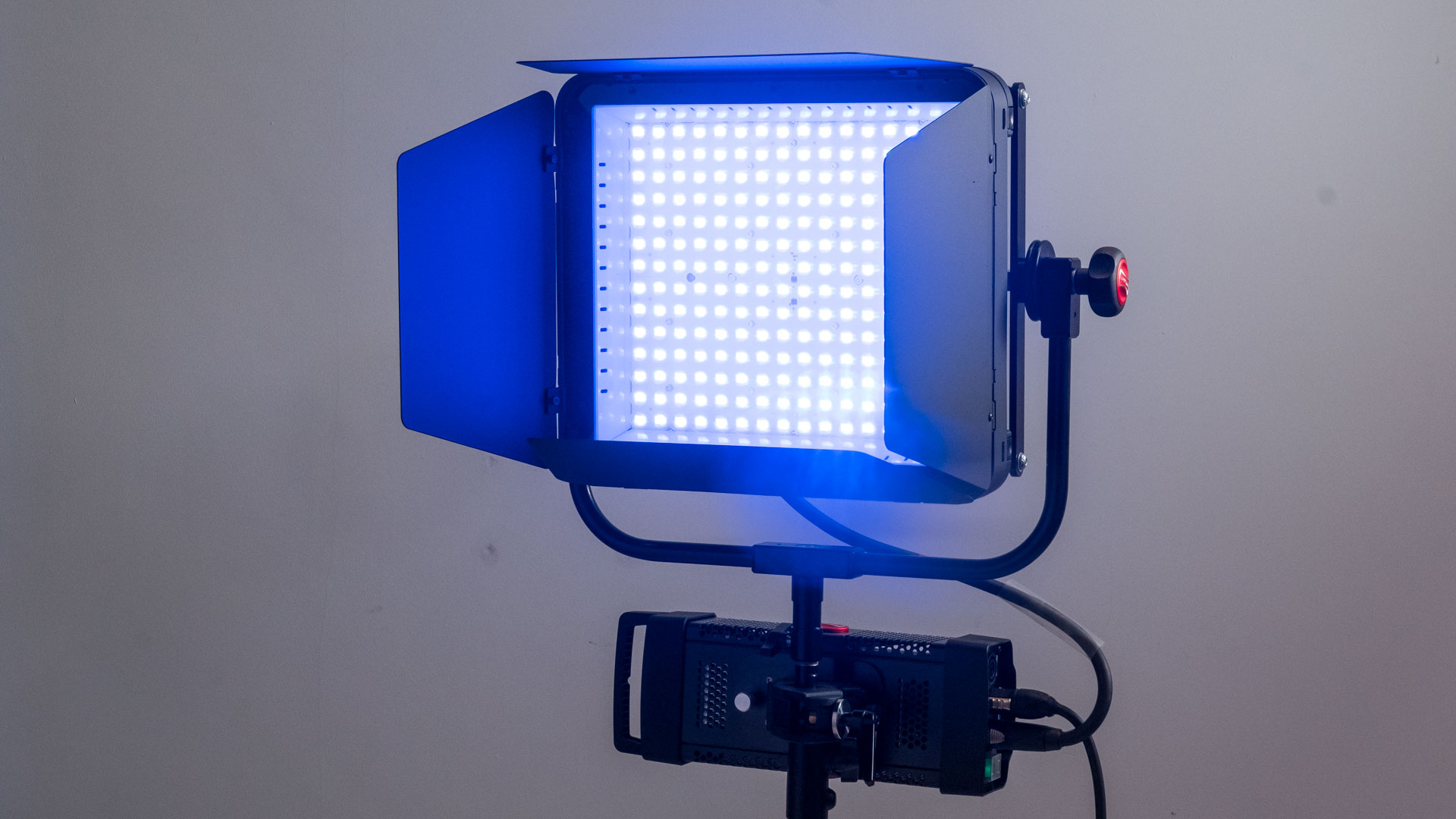
There settings to match the light output to around 1400 Lee or Rosco gels which are sorted by color grouping, name and number. Then if you want to tweak the color even further, you can by using the on-screen sliders or control dials.
The LCD touchscreen color display lets you access all key features with quick-start icons and up to 50 user-customisable presets. In the home screen mode, one option is to select CCT where you can set the color temperature and green/magenta tint to produce white light.
HSI mode allows you to alter the hue, saturation and intensity while RGBW mode lets you adjust the red, green and blue colors. XY mode lets you select the color space you are working in, either full gamut, Rec. 709 or Rec. 2020 for HDR.
And SFX mode offers some special effects for filmmakers. There are customisable settings to mimic the light from a fire, lightning, gunshot, camera flashes, welding sparks and more.
And the electronically-adjustable SmartSoft diffusion changes the softness and quality of light, as well as its spread as the beam angle changes from 68-150 degrees.
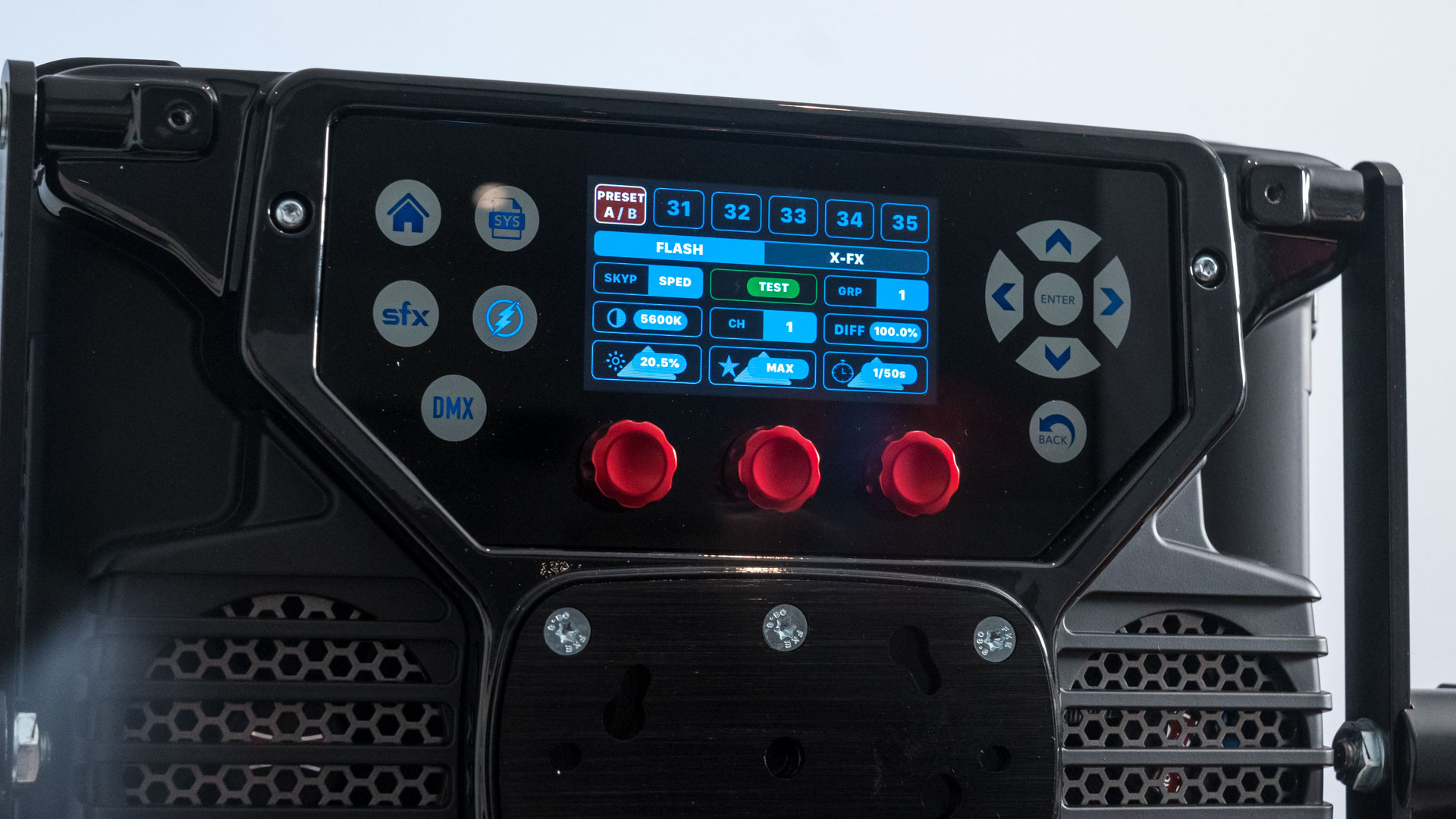
The Titan X1 also has high-speed sync RGB flash at up to 1/8000th for stills, using an integrated Elinchrom EL-Skyport flash receiver. To make it work, however, you have to buy the EL-Skyport Pro transmitter separately. There is also a standard flash sync port for basic triggers.
Build and handling
All Rotolight’s professional Titan series are built for daily TV, broadcast and film use so you know they are well built and rugged. The Titan X1 has a solid build quality with stylish touches like red anodised dials to make the unit far more than just an industrial-style light fixture.
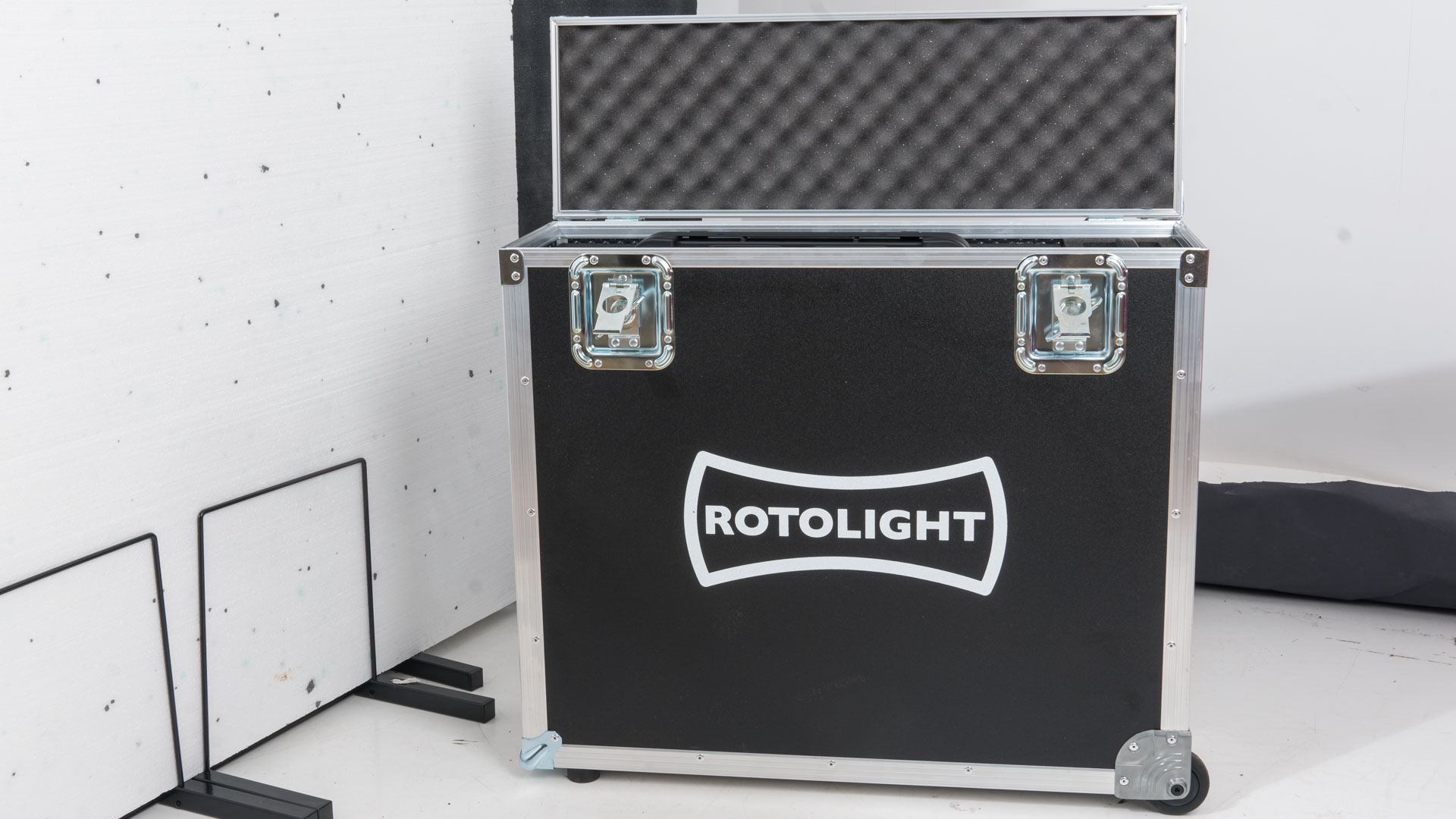
The touschcreen is easy to use and navigate, and the dials are solid and have a very tactile feel. However, you have to adjust these quite slowly as the light sometimes doesn’t quite keep up with the adjustments.
For remote control, the light is DMX ready and comes with built-in compatibility with the Luminair 3 app to control the Titan via DMX radio units or bluetooth from your smartphone.
There are barn doors on the light which control the beam well, and these can be removed if you like. Rotolight is also launching a range of accessories like softboxes and grids to fit, too.
The standard light comes with a yoke fitment for a conventional photo-style light stand. A single knob on the side allows you to adjust the angle. You can also buy a Swan Neck fitment which also goes on a light stand and has an adjustable top clamp to alter the angle of the light. And there is a pole-operated yoke for mounting it to an overhead lighting rig.
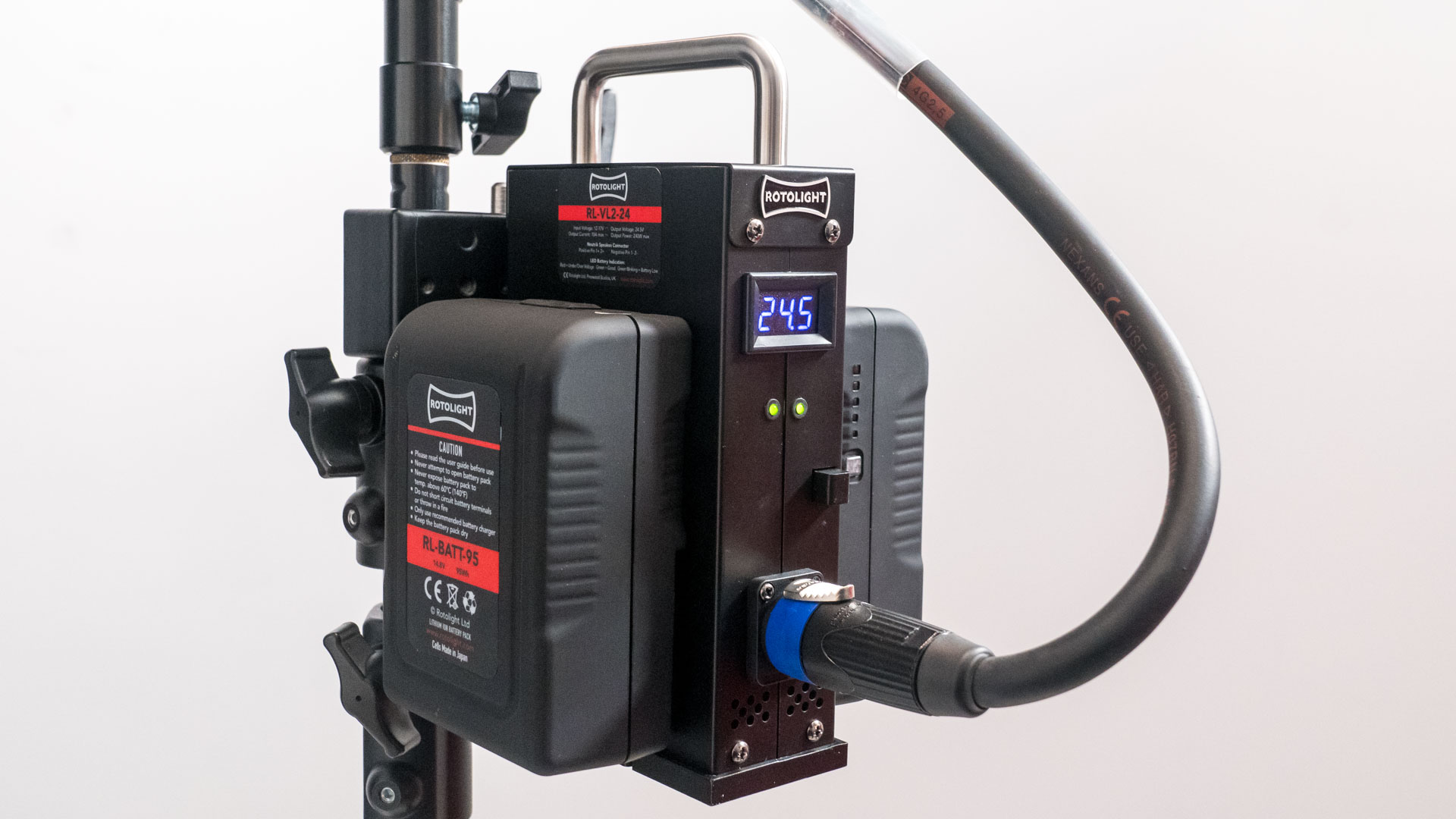
To use the Titan on location, Rotolight has also launched an optional two-way V-Lock battery adapter that enables the light to run at 100% power on location. This unit fixes onto the light stand using Rotolight’s own connector on a standard-style superclamp. A new range of high-capacity batteries will be available in 155Wh and 310Wh versions.
The standard light comes with a mains power transformer and clamp that can either be clamped onto the light stand, or fixed directly to the back of the Titan X1. All the connection are high-quality, professional-style fittings.
Performance
The Titan X1 puts out a maximum of 8290 lux/ 770 foot-candles at 1m which is very bright – probably too bright for a sitter up close. This is roughly the equivalent exposure of f/2.8 at 1/500th sec using ISO 100. If you switch to flash mode, the power is doubled.
At different levels of diffusion and colors, the actual brightness output does vary. But it’s always obvious just how high the output is and how easy it is to turn it down. This power means the light can be moved further away which makes the light a harder, more punchy source. Move the light closer to the subject and it becomes softer, and you can dial in diffusion too.
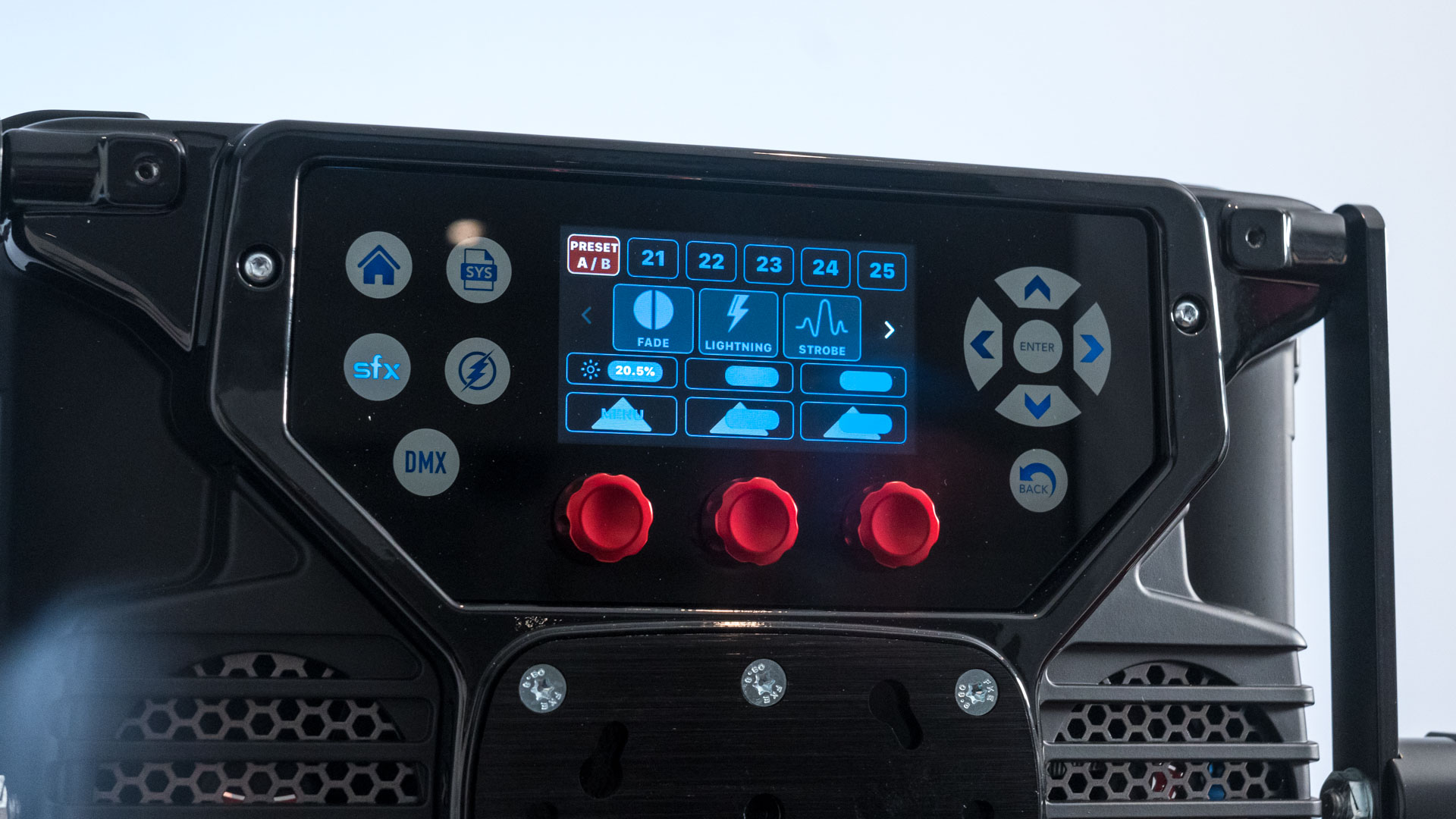
The quality of the light output is excellent, and it’s especially good for skin tones which is where many LED lights can struggle. Our tests showed the color temperature and hue to be totally accurate with no odd color shifts.
And although the SFX settings might seem a bit of a gimmick, they are actually really useful for filmmakers who want an easy way of replicating things like light from a fire, or the blue-and-red flashes from a police car.
Verdict
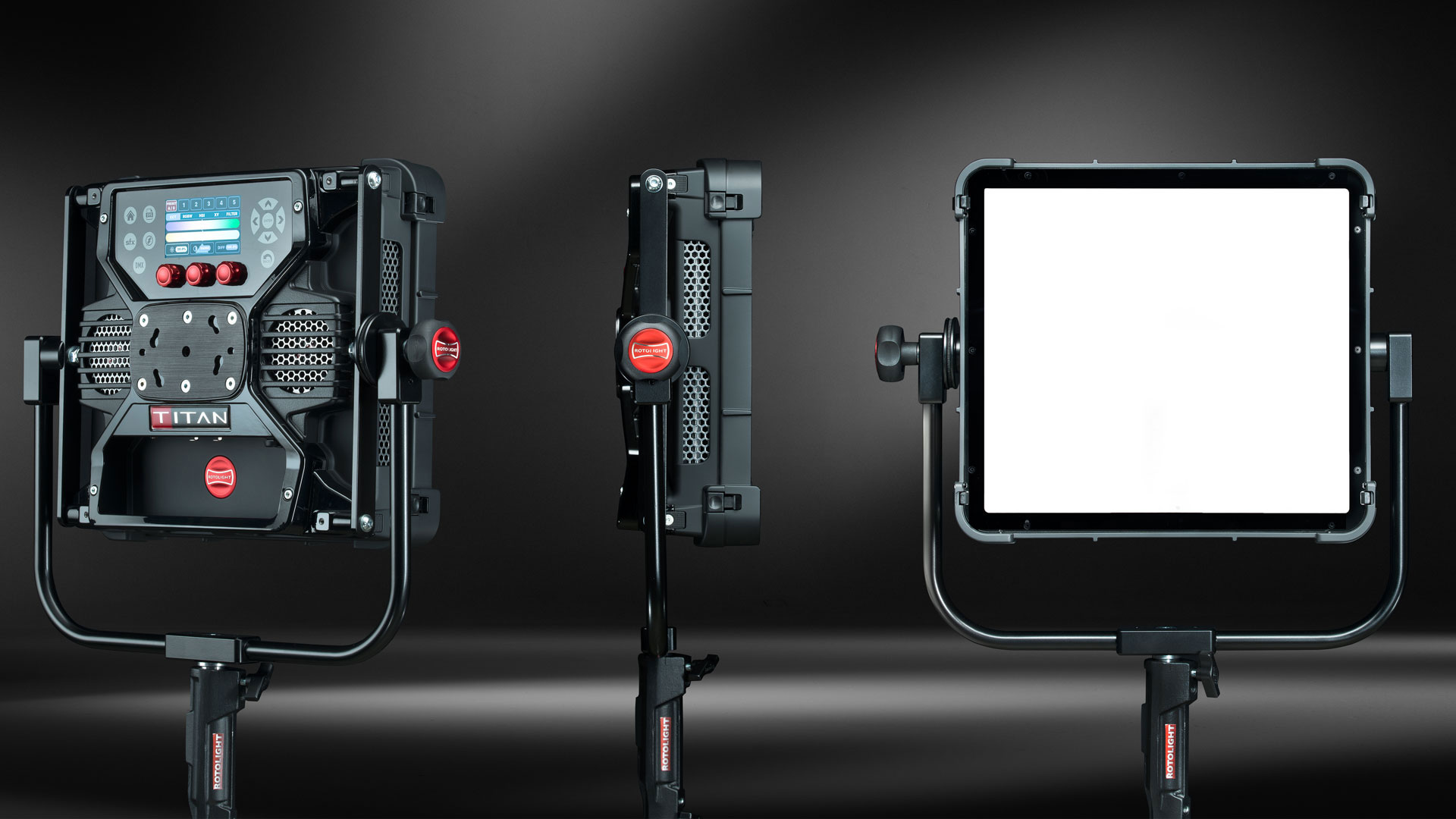
If you are looking for a lighting solution that works well for both stills and video, then the Titan X1 delivers. It’s a professional light that offers the same features as the larger Titan X2 but is actually more portable and easier to rig up, and obviously cheaper. Although it’s still a high-end price for a high-end light.
Up close, with the diffusion dialled in, it’s a lovely soft light that gives great skin tones. Or move it further away, dial out the diffusion and it’s a much punchier source.
The creative use of colors is a plus, as are the SFX and flash settings. But it’s the light’s high power output and dial-in diffusion that put it into a league of its own.
Read more:
• Best video lights
• Best LED light panels
• Best flashguns
• Best flash diffusers
• Best photography lighting kits
• Best reflectors for photography
Adam Duckworth is an award-winning professional photographer and videographer based in the UK. He has worked for many top magazines, newspapers and corporate clients for more than 25 years. He was named SWPP UK Commercial Photographer of the Year, and is an Associate of the British Institute of Professional Photography. He has also worked for international publications like Motor Cycle News, Racer X, The Sunday Times, The Guardian, ZOO, Golf World, Today's Golfer, and Mountain Bike Action, among others.


